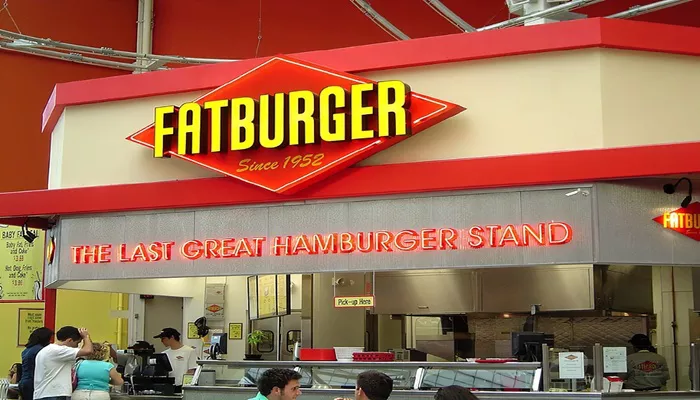Fatburger, known for its delicious, customizable burgers and vibrant dining atmosphere, offers a range of franchise models tailored to different market needs and business goals. This article explores the various modes of the Fatburger franchise, providing insights into their unique features, operational requirements, and potential benefits for aspiring franchisees.
Introduction to Fatburger
Founded in 1952 by Lovie Yancey in Los Angeles, Fatburger has grown from a single restaurant to a global franchise with over 200 locations across multiple countries. The brand prides itself on serving high-quality burgers made from lean beef, grilled to order, alongside a menu that includes chicken sandwiches, turkey burgers, veggie options, chili dogs, fries, onion rings, and milkshakes. With its slogan as “The Last Great Hamburger Stand,” Fatburger aims to create an authentic diner experience characterized by excellent customer service and a nostalgic atmosphere.
The franchise model has evolved significantly since its inception.
Today, Fatburger offers several franchise formats to accommodate different business strategies and market conditions. This flexibility allows potential franchisees to choose a model that aligns with their investment capabilities and operational preferences.
SEE ALSO: What Is Mcdonalds $5 Meal of The Day?
Franchise Models Offered by Fatburger
Fatburger provides four primary franchise models, each designed to cater to specific market demands and consumer preferences:
1. Traditional Model
The Traditional Model is the most common format for Fatburger franchises. It typically occupies between 1,500 and 2,300 square feet of space and can be found in various locations such as inline shops, freestanding units, or end-cap sites. Key features include:
Seating Capacity: Indoor seating for 40-50 customers, often with outdoor seating options.
Service Style: This model usually includes a drive-thru service and caters to breakfast, lunch, dinner, and late-night meals.
Operational Flexibility: Franchisees can offer delivery services and may include bar service depending on the location.
2. Full-Service Model
The Full-Service Model is larger than the traditional format, ranging from 2,500 to 4,500 square feet. This model is designed for high-traffic areas where a more extensive menu can be offered. Features include:
Seating Capacity: Accommodates 100-150 guests indoors with additional patio seating.
Service Style: Provides full table service for all meal times.
Ambiance: Often designed with an upscale casual dining experience in mind.
3. Kiosk Model
The Kiosk Model is compact and efficient, typically ranging from 800 to 1,000 square feet. These kiosks are strategically placed in food courts or similar venues. Features include:
Limited Menu: Focuses on fast cook times with a streamlined menu tailored for quick service.
Seating Capacity: Generally includes limited or no seating.
Operational Efficiency: Ideal for high-volume locations where speed of service is crucial.
4. Co-Branded Locations
Fatburger also offers Co-Branded Locations, which combine the Fatburger menu with Buffalo’s Express offerings. These locations range from 800 to 2,300 square feet and provide a unique dining experience by offering both brands under one roof. Key attributes include:
Diverse Menu Options: Customers can enjoy both burgers and Buffalo wings.
Flexible Design: Can include drive-thru services and bar areas.
Market Appeal: Attracts a broader customer base by catering to fans of both brands.
Financial Considerations
Investing in a Fatburger franchise requires careful financial planning. Here are some key financial aspects to consider:
Initial Investment
The total initial investment for opening a Fatburger franchise varies significantly based on the chosen model:
| Franchise Model | Estimated Investment Range |
| Traditional Model | $508,600 – $1,694,900 |
| Full-Service Model | $650,000 – $1 million |
| Kiosk Model | $462,000 – $770,000 |
| Co-Branded Locations | $500,000 – $1 million |
Franchise Fees
Franchisees must pay an initial franchise fee of $50,000. Additionally:
A royalty fee of 6% on gross sales is required.
A marketing fee of approximately 3% is also applicable.
Financial Requirements
Potential franchisees must meet specific financial criteria:
Minimum net worth of $1.5 million.
Liquid assets of at least $500,000.
Training And Support
Fatburger places significant emphasis on training and support for its franchisees. The franchisor provides comprehensive training programs covering all aspects of restaurant operations. Key components include:
Extensive Training Programs: Covering everything from food preparation to customer service.
Operational Support: Ongoing assistance in managing daily operations effectively.
Marketing Support: Guidance on local marketing strategies to drive sales.
Timeline for Opening
The timeline for opening a new Fatburger location can vary based on several factors including site selection and municipal permitting processes. Typically:
The average timeframe ranges from 12 to 18 months, depending on location-specific variables.
Fatburger’s management team collaborates closely with new franchisees during this period to ensure a smooth launch.
Conclusion
Owning a Fatburger franchise presents an exciting opportunity for entrepreneurs passionate about quality food and excellent customer service. With multiple operational models available—each designed to meet diverse market needs—potential franchisees can select an option that aligns with their business goals and investment capacity.
By leveraging extensive training programs and ongoing support from the franchisor, new owners can navigate the complexities of running a successful restaurant while benefiting from the established brand reputation that Fatburger enjoys globally.
Related topics:
- How Much A Mexican Pepper Franchise Owner Makes in A Year
- How Much Does A Marco Pizza Franchise Owner Make?
- What Sauces Are Keto Friendly at Chick Fil A?

